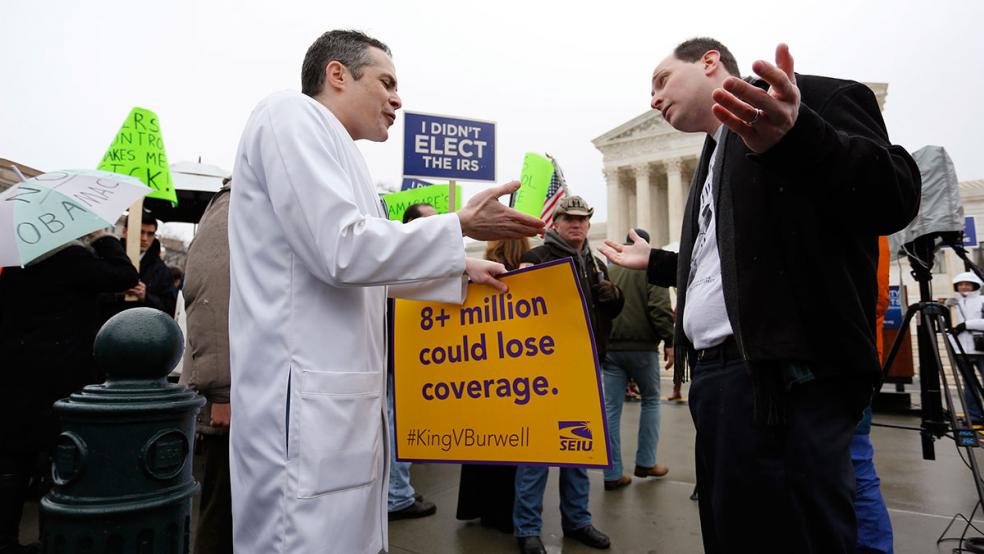The administration did its best to put a positive spin on it. But Monday’s announcement that premiums for one of the most popular health care plans on the Affordable Care Act exchanges will rise a jarring 25 percent on average in 2017 confirmed that Obamacare may be heading into its rockiest season yet.
The 25 percent spike – more than three times the increase in premium rates this year – will apply to the second lowest rate among moderately-priced “silver” tier plans in the 38 states where the federal government operates health insurance exchanges and provides tax subsidies to lower income people. The average premium increase would be slightly lower when factoring in rate increases in the dozen other states that operate their own insurance exchanges.
Related: Obamacare in Critical Condition as Major Insurers Flee the Market
Obama administration officials told reporters that three-fourths of consumers would nonetheless be able to purchase health care insurance for less than $100 a month with the help of tax subsidies for low and moderate income individuals and families, according to the New York Times. They said that consumers could also shop around for lower-cost plans, even as many will find fewer choices as a result of a handful of major insurers deciding to pull out of the market.
The announcement provided further proof – just a week before the start of a new Obamacare enrollment period and two weeks before the election -- that consumers will be buffeted by soaring costs for premiums and out of pocket costs in the 2017 season. The news could provide added grist for Republican presidential nominee Donald Trump to argue that Obamacare is hopelessly flawed and needs to be repealed and replaced. But Trump since has not been campaigning policy issues, the Obamacare announcement could help down-ballot Senate and House Republicans who argued from the outset that the ACA was a highly flawed health care system.
Democratic presidential nominee Hillary Clinton has strongly supported the program, but has been critical of “skyrocketing out-of-pocket health costs” and argues that the federal government should be able to step in to block or modify unreasonably high premium rate increases.
Related: Minnesota Could Be the First Obamacare Domino to Fall
The administration issued a forecast last week that monthly enrollments in the Affordable Care Act insurance exchange would average 11.4 million in 2017, up from a monthly average of 10.5 million this year. However, as many as seven million people make too much money to qualify for subsidies and likely will feel the full brunt of the rate increases.
Last week, major insurers participating in Obamacare won approval for substantial premium hikes next year in a dozen or more states. The increases range as high as 30 percent to 50 percent, according to new data.
Troubled by the decisions of Aetna, UnitedHealthcare, Blue Cross Blue Shield and other giants to pull out of many states after incurring hundreds of millions in losses, state insurance regulators appeared eager to accept these rate increases to prop up insurers remaining in the program.
Related: Obamacare Insurers Are Looking for a Taxpayer Bailout
Major insurers that have indicated they intend to continue selling individual policies on the government-subsidized and operated exchanges next year have been granted average premium increases of 30 percent or more in Alabama, Delaware, Hawaii, Kansas, Mississippi and Texas, according to The Wall Street Journal.
Rate hikes by major insurers will top 50 percent in other states, including Arizona, Illinois, Montana, Oklahoma, Pennsylvania and Tennessee, according to the Journal’s survey.
Many insurers are getting out of the market after losing hundreds of millions of dollars by providing coverage for too many older and sicker Americans and too few younger and healthier people.





